New Holland is the official agricultural equipment supplier to Goodwood Estate. This sees a large number of blue and yellow products operating on a day-to-day basis throughout the farm. This partnership leaves CNH with an ideal showground for events, such as the most recent that the Irish Farmers Journal attended.
New Holland takes great pride in its forage harvester range, with over 60 years of heritage in the area. The five-model range is made up of the FR480, FR550, FR650, FR780 and the FR920.
New Holland replaced its 824hp flagship Forage Cruiser FR850 in 2017 with the 911hp FR920. This power boost of 87hp, among other subtle changes such as beefed-up feed rollers and heavy duty crop processors (CP), sees the Belgian-built machines more capable of dealing with the increased power and throughput.
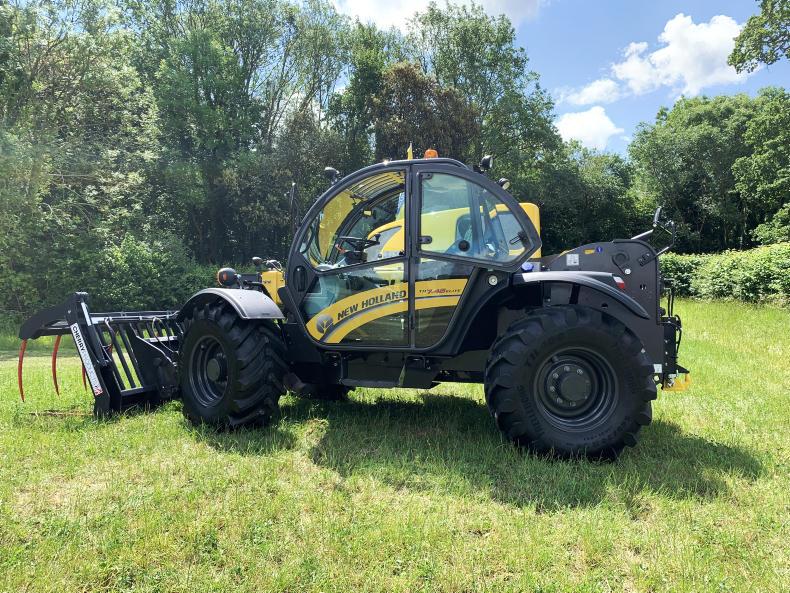
The new TH range telehandlers see many improvements from the older generation machines.
Engine
Engines are a particular component of the Forage Cruiser line that New Holland is proud of as every model is powered by CNH subsidiary engine manufacturer FPT. Before this, New Holland foragers came equipped with CAT engines. The company says the fact that engines are no longer sourced outside of the CNH umbrella means they can provide a better service to customers.
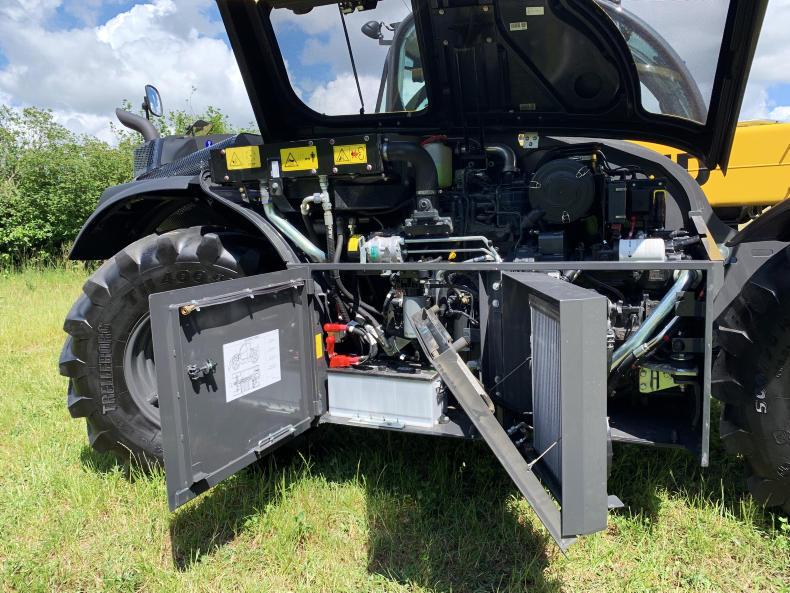
The engine bay is very easily accessed from a maintenance point of view on the TH range.
Main focus on the new flagship FR920 is within the engine bay, home to the new FPT V20 engine, whereas the rest of the range have Cursor 13 and Cursor 16 motors. This V20 block has substantially more capacity, with the ability to offer all its 911hp (670kW) at 1,600rpm to 1,800rpm, producing 4,095Nm of torque. A noteworthy torque rise of 44% from 2,100rpm to 1,600rpm contributes to a power curve which New Holland claims has been mapped precisely to suit the requirements of forage harvesting. Put simply, the FR920’s power curve is set for top performance, with heavy crops reacting responsively to fast-changing loads. Both the FR780 and FR920 meet Stage V engine regulations, with the use of ECOBlue and HI-eSCR 2 technology.
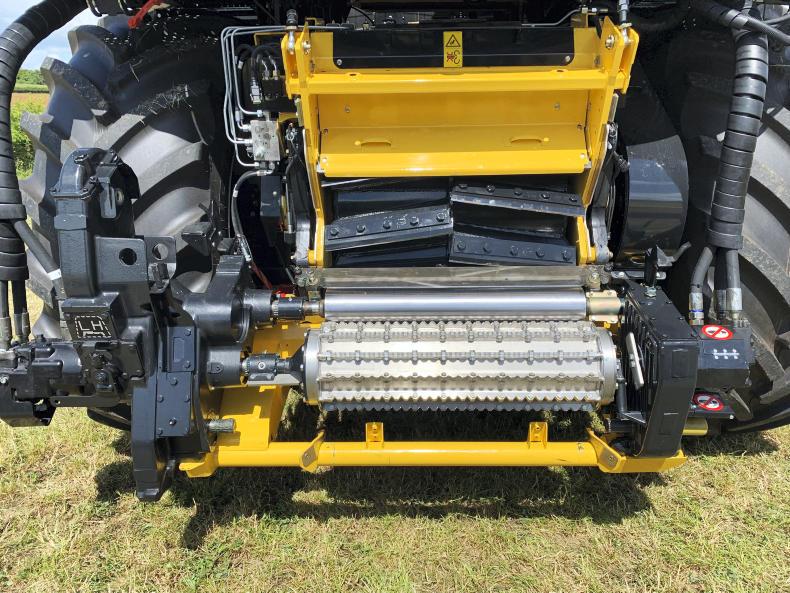
The updated chopping assembly sees beefed up rollers among other changes add to improved smoothness of crop intake.
The brand claims to be on top when it comes to maintenance costs and fuel efficiency, offering its best fuel-efficient performance in the 1,600rpm to 1,900rpm working range. The V20 engine is mounted longitudinally to allow for a smaller turning circle, but more importantly greater airflow down along each side of the engine block. This is to prevent hot spots from forming from insufficient, unbalanced cooling.
Chopping unit and feed rollers
The second main area on the FR920 to see changes is the chopping assembly. The stainless steel feed rollers see between 2mm and 3mm increased metal thickness. Tooth profiles on the feed rollers are now more aggressive than before. Torsion bar relocation and increased feed roller travel all contribute to improved smoothness of crop flow through the forager, according to the firm.
The 860mm wide feed intake is designed to increase crop intake and reduce wear on components. Five configurations of chopping drums are available, offering a theoretical chop length between 2mm and 33mm. These drums weigh in excess of 780kg, thus creating high inertia acting like a flywheel, creating momentum. This makes it easier to deal with large lumps of grass as the rotational force absorbs the sudden larger load requirement. All of these updates along with the market-leading 860mm intake channel contribute to the machine’s high throughput capabilities.
On show were the three different crop processors, the latest being the heavy duty DuraCracker which has been designed with reinforced frames and drives to offer a higher intensity of crop processing. This processor is ideally suited to higher output machines such as the FR920. The DuraCracker comes with the option of 100 or 130 teeth with speed differentials of 30% or 40%. Switching between grass and maize settings can be done in as little as two minutes, New Holland claims, as the CP can be switched out without the need for tools.
The FR920 comes as standard with New Holland’s Terralock feature, which automatically activates and deactivates four-wheel drive at the headland depending on the steering angle of the rear wheels. A new heavy-duty drive system increases torque transferred to the wheels by 60%. Mechanical four-wheel drive partly accounts for the high torque transfer to the ground.

The W170D wheel loader was showing of its capabilites.
Another key topic at the New Holland press event in Goodwood was the recently extended telehandler range, now consisting of six models, with 14 versions within. Four spec levels are offered – S, Classic, Plus and Elite. As well as an extended model range, the telehandlers now bear the TH name, standing for Telescopic Handler, while machine numbering is based on the key machine specifications. On top of the new naming and numbering, the range has adopted the yellow colour scheme from the harvesting family.
All TH models see a refreshed cab, providing a nice airy working environment for the operator. The range has the same engines as the T6 tractor range, offering up to 146hp in its Elite models. All models see Carraro axles with front Limited Slip Differential (LSD) while the high-spec Elite model offers both front and rear LSDs. Elite models come as standard with many other features including the armrest-mounted joystick, auto-steering alignment when switching between two, four-wheel and crab steering modes. All models up to the Elite have 35km/h transmission while the Elite itself has a 40km/h powershift transmission. All machines apart from the TH6.32 S and TH7.32 S offer variable flow hydraulic pumps while these two machines offer gear type pumps.
New Holland claims the Plus version is best suited to the livestock farmer with mixed operations as it offers plenty of comfort features, including a telescopic steering column and HVAC system. The S, Classic and Plus models are fitted with the same engine as the Elite, but offer 13hp less than the Elite model. The TH series sees a new transmission with electronic modulation. The 4x3 version on the S and Classic models improves gear ratios for different applications such as silage work. The 6x3 version on Plus and Elite models offer two forward and reverse shuttling modes as well as an automatic gear shifting mode. The Elite model has an automatic gear shifting mode as well as an additional automatic shuttling mode for better performance around the yard.
A nice feature of the TH range is the easily accessible engine bay. All parts of the engine are exposed once the bonnet is opened, while the cooling pack assembly folds round in front of the operator leaving easy access for routine maintenance.
New Holland is the official agricultural equipment supplier to Goodwood Estate. This sees a large number of blue and yellow products operating on a day-to-day basis throughout the farm. This partnership leaves CNH with an ideal showground for events, such as the most recent that the Irish Farmers Journal attended.
New Holland takes great pride in its forage harvester range, with over 60 years of heritage in the area. The five-model range is made up of the FR480, FR550, FR650, FR780 and the FR920.
New Holland replaced its 824hp flagship Forage Cruiser FR850 in 2017 with the 911hp FR920. This power boost of 87hp, among other subtle changes such as beefed-up feed rollers and heavy duty crop processors (CP), sees the Belgian-built machines more capable of dealing with the increased power and throughput.

The new TH range telehandlers see many improvements from the older generation machines.
Engine
Engines are a particular component of the Forage Cruiser line that New Holland is proud of as every model is powered by CNH subsidiary engine manufacturer FPT. Before this, New Holland foragers came equipped with CAT engines. The company says the fact that engines are no longer sourced outside of the CNH umbrella means they can provide a better service to customers.

The engine bay is very easily accessed from a maintenance point of view on the TH range.
Main focus on the new flagship FR920 is within the engine bay, home to the new FPT V20 engine, whereas the rest of the range have Cursor 13 and Cursor 16 motors. This V20 block has substantially more capacity, with the ability to offer all its 911hp (670kW) at 1,600rpm to 1,800rpm, producing 4,095Nm of torque. A noteworthy torque rise of 44% from 2,100rpm to 1,600rpm contributes to a power curve which New Holland claims has been mapped precisely to suit the requirements of forage harvesting. Put simply, the FR920’s power curve is set for top performance, with heavy crops reacting responsively to fast-changing loads. Both the FR780 and FR920 meet Stage V engine regulations, with the use of ECOBlue and HI-eSCR 2 technology.

The updated chopping assembly sees beefed up rollers among other changes add to improved smoothness of crop intake.
The brand claims to be on top when it comes to maintenance costs and fuel efficiency, offering its best fuel-efficient performance in the 1,600rpm to 1,900rpm working range. The V20 engine is mounted longitudinally to allow for a smaller turning circle, but more importantly greater airflow down along each side of the engine block. This is to prevent hot spots from forming from insufficient, unbalanced cooling.
Chopping unit and feed rollers
The second main area on the FR920 to see changes is the chopping assembly. The stainless steel feed rollers see between 2mm and 3mm increased metal thickness. Tooth profiles on the feed rollers are now more aggressive than before. Torsion bar relocation and increased feed roller travel all contribute to improved smoothness of crop flow through the forager, according to the firm.
The 860mm wide feed intake is designed to increase crop intake and reduce wear on components. Five configurations of chopping drums are available, offering a theoretical chop length between 2mm and 33mm. These drums weigh in excess of 780kg, thus creating high inertia acting like a flywheel, creating momentum. This makes it easier to deal with large lumps of grass as the rotational force absorbs the sudden larger load requirement. All of these updates along with the market-leading 860mm intake channel contribute to the machine’s high throughput capabilities.
On show were the three different crop processors, the latest being the heavy duty DuraCracker which has been designed with reinforced frames and drives to offer a higher intensity of crop processing. This processor is ideally suited to higher output machines such as the FR920. The DuraCracker comes with the option of 100 or 130 teeth with speed differentials of 30% or 40%. Switching between grass and maize settings can be done in as little as two minutes, New Holland claims, as the CP can be switched out without the need for tools.
The FR920 comes as standard with New Holland’s Terralock feature, which automatically activates and deactivates four-wheel drive at the headland depending on the steering angle of the rear wheels. A new heavy-duty drive system increases torque transferred to the wheels by 60%. Mechanical four-wheel drive partly accounts for the high torque transfer to the ground.

The W170D wheel loader was showing of its capabilites.
Another key topic at the New Holland press event in Goodwood was the recently extended telehandler range, now consisting of six models, with 14 versions within. Four spec levels are offered – S, Classic, Plus and Elite. As well as an extended model range, the telehandlers now bear the TH name, standing for Telescopic Handler, while machine numbering is based on the key machine specifications. On top of the new naming and numbering, the range has adopted the yellow colour scheme from the harvesting family.
All TH models see a refreshed cab, providing a nice airy working environment for the operator. The range has the same engines as the T6 tractor range, offering up to 146hp in its Elite models. All models see Carraro axles with front Limited Slip Differential (LSD) while the high-spec Elite model offers both front and rear LSDs. Elite models come as standard with many other features including the armrest-mounted joystick, auto-steering alignment when switching between two, four-wheel and crab steering modes. All models up to the Elite have 35km/h transmission while the Elite itself has a 40km/h powershift transmission. All machines apart from the TH6.32 S and TH7.32 S offer variable flow hydraulic pumps while these two machines offer gear type pumps.
New Holland claims the Plus version is best suited to the livestock farmer with mixed operations as it offers plenty of comfort features, including a telescopic steering column and HVAC system. The S, Classic and Plus models are fitted with the same engine as the Elite, but offer 13hp less than the Elite model. The TH series sees a new transmission with electronic modulation. The 4x3 version on the S and Classic models improves gear ratios for different applications such as silage work. The 6x3 version on Plus and Elite models offer two forward and reverse shuttling modes as well as an automatic gear shifting mode. The Elite model has an automatic gear shifting mode as well as an additional automatic shuttling mode for better performance around the yard.
A nice feature of the TH range is the easily accessible engine bay. All parts of the engine are exposed once the bonnet is opened, while the cooling pack assembly folds round in front of the operator leaving easy access for routine maintenance.








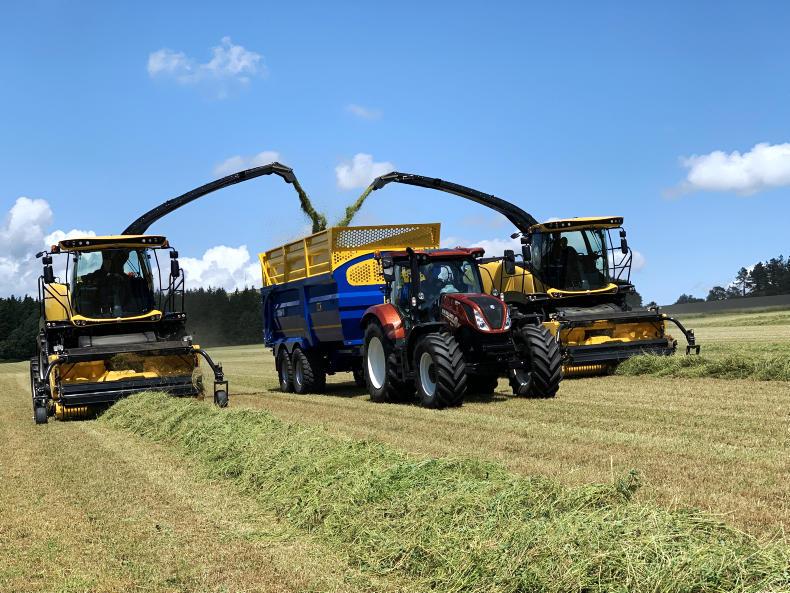
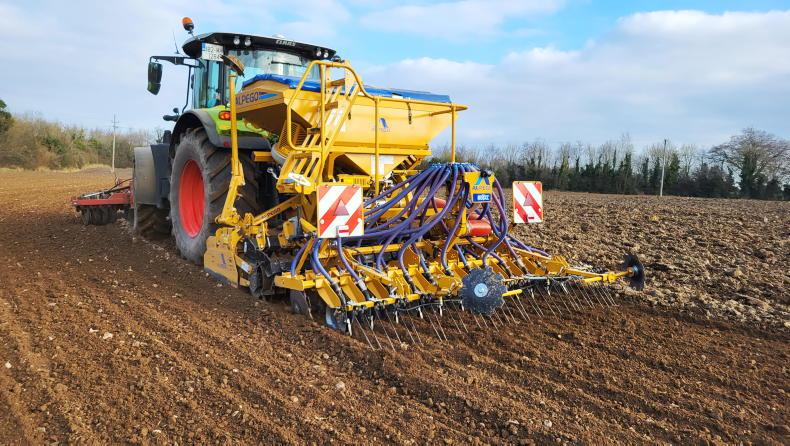

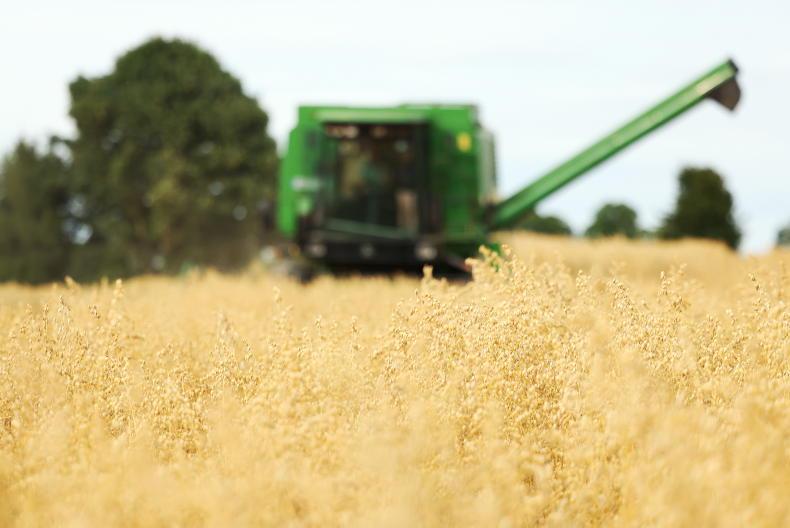
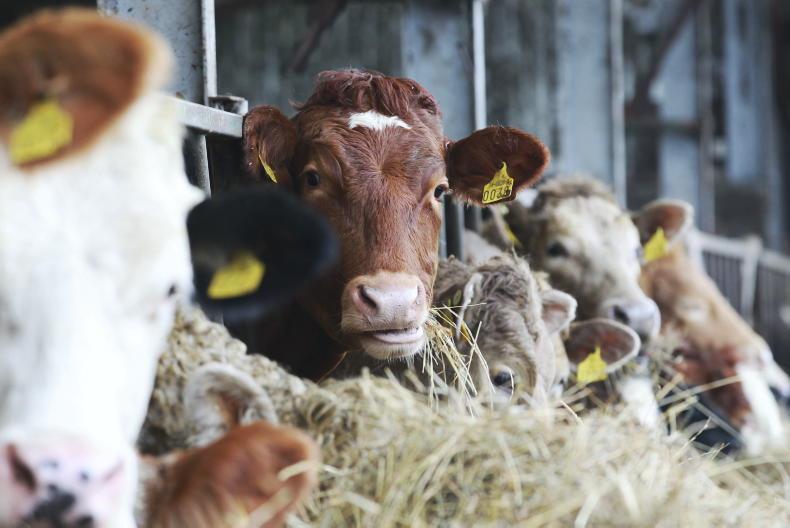
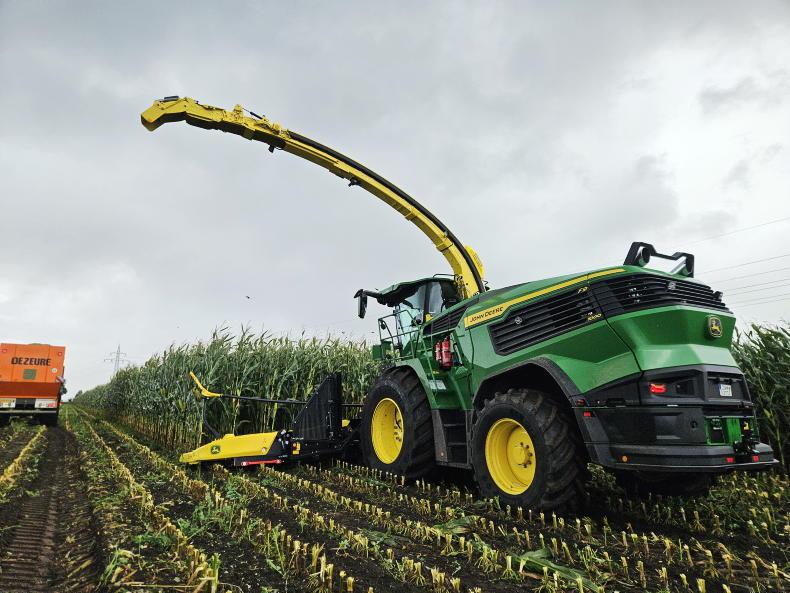
SHARING OPTIONS